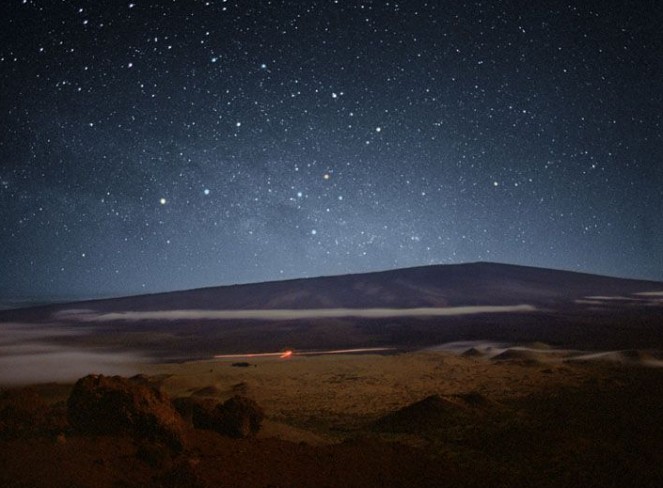
|
Credit & Copyright: Barney Magrath (Kamuela, HI)
Explanation:
Gazing across this gorgeous skyscape, the
Southern Cross and
stars of the constellation Centaurus are seen above
the outline of
Mauna Loa
(Long Mountain), planet Earth's
largest volcano.
Unfamiliar
to sky gazers north of about 25 degrees north latitude,
the Southern Cross, constellation Crux, is near the horizon
to the left of Mauna Loa's summit.
A compact constellation of bright stars, the long axis of the cross
conveniently points south toward the southern
celestial pole.
The top of the cross is marked by the lovely pale red star
Gamma Crucis,
which is in fact a red giant star about 120 light-years distant.
Stars of the grand
constellation Centaurus almost engulf
the Southern Cross with blue giant
Beta Centauri, and
yellowish Alpha Centauri,
appearing as the brightest stars to the left of Gamma Crucis.
At a distance of 4.3 light-years,
Alpha Centauri,
the closest star to the Sun,
is actually a triple star system which includes a
star similar to the Sun.
But what caused the reddish streaks in the foreground of this time
exposure?
Alas, it is the mundane glow of lights from cars (not molten
lava!)
traveling the road to Hilo,
Hawaii.
|
January February March April May June July August September October November December |
| |||||||||||||||||||||||||||||||||||||||||||||||||||||||
NASA Web Site Statements, Warnings, and Disclaimers
NASA Official: Jay Norris. Specific rights apply.
A service of: LHEA at NASA / GSFC
& Michigan Tech. U.
Based on Astronomy Picture
Of the Day
Publications with keywords: Alpha Centauri - volcano
Publications with words: Alpha Centauri - volcano
See also:
